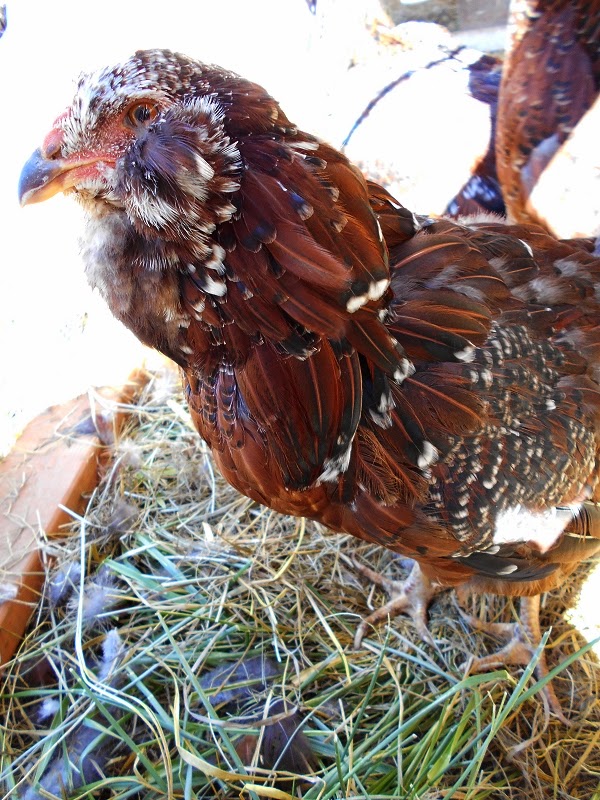The hens are growing their feathers rather quickly now. One of the gals definitely will have more spangles this year. With the feathers developing so quickly now, perhaps in a week, we won't even know that they were almost bald two weeks ago.
The "main" hen who thinks she's All That and More is back to attacking the hand that feeds her. I had to kind of "return the favor" after she bit me hard enough to form a welt. She didn't think I would push her around with a backhanded swat to the chest.... That and a deep voiced "No!" seemed to let her know that she's not the top chicken in the coop. She still has a couple of straggly tail feathers hanging in. It could be that she's a little embarrassed by her less than perfect appearance. She's the hen in the front, closest to me in the middle photo as well as the last photo below.
The first two photos let you see the feather shafts and new neck feathers on the other hen who molted the most severely. You can hardly tell that she was so straggly little more than a week ago.
All in all, they are re-feathering nicely.
The "main" hen who thinks she's All That and More is back to attacking the hand that feeds her. I had to kind of "return the favor" after she bit me hard enough to form a welt. She didn't think I would push her around with a backhanded swat to the chest.... That and a deep voiced "No!" seemed to let her know that she's not the top chicken in the coop. She still has a couple of straggly tail feathers hanging in. It could be that she's a little embarrassed by her less than perfect appearance. She's the hen in the front, closest to me in the middle photo as well as the last photo below.
The first two photos let you see the feather shafts and new neck feathers on the other hen who molted the most severely. You can hardly tell that she was so straggly little more than a week ago.
All in all, they are re-feathering nicely.



































